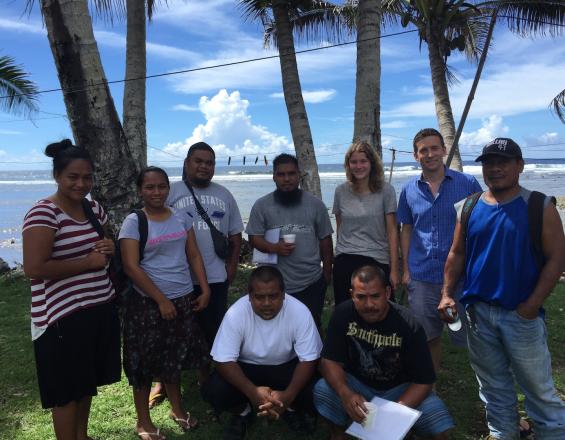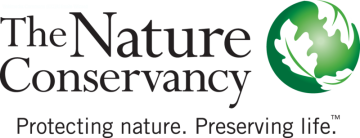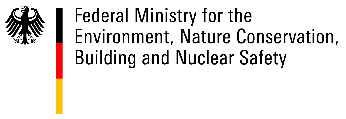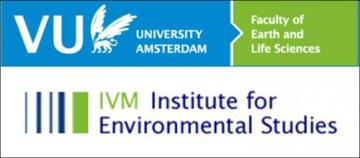Empoderar a las comunidades insulares: el uso del análisis coste-beneficio para apoyar decisiones informadas de adaptación al cambio climático

Las soluciones de adaptación basadas en los ecosistemas se identificaron y seleccionaron en un proceso participativo llevado a cabo en las islas de atolones bajos y las comunidades de las islas altas de Palaos y los Estados Federados de Micronesia (EFM). Se llevó a cabo un análisis coste-beneficio (ACB) para evaluar los costes y beneficios de cada solución EbA, en términos de pérdidas de bienestar, debido a la implementación de proyectos o políticas, y ganancias de bienestar asociadas a la mejora de la provisión de servicios ecosistémicos.
Contexto
Défis à relever
- Aumento del riesgo de que el cambio climático afecte a los medios de subsistencia y el bienestar de las comunidades, en particular debido a la escasez de agua, los daños causados por las tormentas y el declive de la pesca;
- Recursos limitados para la adaptación al cambio climático;
- Eficacia desconocida de las soluciones de adaptación basadas en los ecosistemas.
Ubicación
Procesar
Resumen del proceso
Los pilares "identificar soluciones AbE mediante evaluaciones participativas" y "comunicar soluciones AbE y compensaciones a las partes interesadas" están estrechamente relacionados. Una característica clave es que los miembros de la comunidad participan directamente tanto en la identificación de posibles soluciones AbE como en la comprensión y discusión de los resultados del ACB. Además, gran parte de la información utilizada para realizar el ACB se obtiene directamente de los miembros de la comunidad a través de encuestas domiciliarias y entrevistas a expertos. Como consecuencia, existe un alto grado de comprensión y apropiación de los resultados. Esta interacción entre los componentes ayuda a generar interés en el proceso de selección de la AbE desde la fase más temprana posible.
Bloques de construcción
Identificación de soluciones EbA mediante evaluaciones participativas
La identificación de soluciones AbE viables desde el punto de vista social, económico y medioambiental para cada comunidad se determinó mediante:
(1) evaluaciones participativas locales para identificar amenazas y posibles soluciones;
(2) encuestas a los hogares para recabar información sobre fuentes de ingresos y dependencia de los recursos naturales y
(3) análisis social de costes y beneficios (ACB) para comparar explícitamente los costes y beneficios de las opciones de adaptación, incluidos los impactos sobre los servicios ecosistémicos.
Factores facilitadores
Históricamente, las comunidades micronesias han dependido de los servicios ecosistémicos y la conexión con los ecosistemas y la naturaleza sigue siendo fuerte en la actualidad. Esta fuerte conexión, unida a la propiedad y al conocimiento local, fue el principal motor de la aceptación y aplicación de la AbE. El enfoque de base permitió identificar los usos tradicionales de los recursos, que generalmente se asociaban a prácticas sostenibles.
Lección aprendida
a) Las reuniones participativas fueron el escenario esencial para que las distintas partes interesadas se reunieran y comprometieran su tiempo, como comunidad, para mantener y gestionar sus ecosistemas insulares;
b) El uso de un enfoque participativo ayudó a reforzar el sistema de gobernanza tradicional y a mejorar la responsabilidad y la apropiación de las comunidades insulares;
c) la participación activa reforzó las soluciones de AbE al reconocer la relevancia de la adaptación al cambio climático para los individuos, los hogares y toda la comunidad.
Pasos para comunicar eficazmente las soluciones y compensaciones de la EbA a las partes interesadas
Es importante comunicar los resultados de un análisis complejo, como un análisis coste-beneficio (ACB), de forma no técnica. Los resultados se comunicaron a las comunidades en forma de mensajes clave que abarcaban los efectos de la AbE en el bienestar de la comunidad, las tradiciones y las normas consuetudinarias. Por ejemplo, la restauración de pozos históricos para el suministro de agua durante emergencias climáticas también conlleva beneficios sociales, como el mantenimiento de lugares históricos y consuetudinarios. Del mismo modo, la solución EbA para la protección de las cuencas hidrográficas también ayuda a proteger las zonas utilizadas para proporcionar plantas para usos medicinales tradicionales. Descubrimos que una forma eficaz de comunicar soluciones, sinergias y compensaciones es aprovechar los usos tradicionales de los servicios y recursos de los ecosistemas.
Factores facilitadores
Apoyo de las ONG locales, Interés de las comunidades por los retos y las oportunidades
Lección aprendida
a) Es crucial desglosar los resultados del ACB en un lenguaje no técnico, a través de mensajes clave que detallen los beneficios y los costes, para que las personas, los hogares y la comunidad puedan sopesar los retos y las oportunidades de las soluciones de AbE;
b) era importante presentar los beneficios como oportunidades en términos de desarrollo de capacidades, fuente alternativa de ingresos o medios de subsistencia y describir la mejora del bienestar de los hogares y la comunidad
c) en la medida de lo posible, la presentación de los costes en términos del tiempo que las comunidades deben dedicar a aplicar y hacer cumplir una solución (por ejemplo, mantenimiento de pozos, franjas de vegetación, etc.) mejora la comprensión de los resultados.
Impactos
La comparación de distintas soluciones de adaptación en términos de beneficios monetarios y no monetarios permitió a las comunidades de Palaos y los Estados Federados de Micronesia tomar decisiones informadas sobre qué proyecto de adaptación responde mejor a sus necesidades.
Los resultados sobre adaptaciones EbA, como la revegetación para controlar la erosión, la gestión de residuos para reducir la contaminación de las aguas superficiales o la ordenación del territorio, son algunas de las soluciones que las cuencas hidrográficas de Palaos y Micronesia adoptaron basándose en los resultados del ACB.
Las comunidades de los atolones coralinos de baja altitud se han planteado la creación o implantación de zonas marinas protegidas frente a la mejora de la agricultura o la gestión de los recursos hídricos. Por ejemplo, el atolón de Pakin (Estados Federados de Micronesia) está implantando una pocilga de cama seca porque es la solución que ofrece mayores beneficios económicos al reducir la contaminación del agua y disminuir el impacto de los cerdos en la producción de cultivos.
Es importante destacar que el ACB pone de relieve otros beneficios asociados a las estrategias de adaptación al cambio climático que proporcionan a las comunidades conocimientos sobre el flujo de servicios derivados de la gestión, conservación o restauración de un ecosistema. Para las comunidades micronesias, esta información es extremadamente relevante, ya que la identidad cultural está profundamente vinculada a los bienes y servicios de los ecosistemas.
Beneficiarios
Ocho comunidades insulares de Micronesia, así como sus gobiernos municipales y estatales.








